AudioCulture
The noisy library of New Zealand music
Te pātaka korihi o ngā puoro o Aotearoa
Edmund Cake
aka Ed McWilliams
The surreal/singalong-pop psychedelia of Bressa Creeting Cake (with Geoff Maddock and Joel Wilton) and Pie Warmer (with Tamasin Taylor of the Nudie Suits); production work with Anika Moa, Anna Coddington, Neil and Tim Finn, Tim Guy, The Brunettes and Rick Bryant; collaborations with Neil Finn and Don McGlashan; and his solo work as Edmund Cake mark out a strange and varied terrain dotted with sunny hillsides, boggy swamps, bushy barns, suburban super-malls, derelict downtowns and beatnik hangouts. Let’s go for a wander.
Wouldn’t It Be Good
Mr McWilliams took the young Edmund along on a business trip to Hong Kong in 1984, when Ed was 12. Dad was out chasing deals most of the time, so Ed stayed in the hotel room and listened to his Nick Kershaw tape. Soon after arriving back in New Zealand, Ed formed his first band, Egz, and began his forays into recording.
“We recorded onto a portable cassette machine ... lots of swearing, really. It was my thing, but I didn’t sing in it. I had a dodgy drum kit with no kick drum and no sticks, so I just used branches. I plugged my Casio VL-Tone into the phono jack of my dad’s radiogram in the garage. The Casio had a 100-note sequencer in it, so I’d write a bassline ... the garage was open and had no doors, and I found out it sounded better if you put the tape recorder out on the grass for distance recording. The people I’d roped in to sing would go out and hover over the tape recorder while I played along with the sequence on my branch-drums in the background. I’ve still got some of those recordings.”
Edmund took up bass and singing when he formed his next band, The Gutter Wizards, a trio of 13-year-olds comprising Ed, Ben Jellimeat on drums and Chris Ralph on guitar. They sometimes practised at their friend Mark Leach’s house, where they could turn the volume up quite loud and practise in the living room. Mark’s parents didn’t mind as they were both deaf. Mrs. Leach, oblivious to the noise, would bring in tea and biscuits and put the tray down on the coffee table while the lads banged away at their punky-pop. You have to wonder at the next-door neighbour’s patience, though. When they couldn’t practice there, they would jam on the roof of the Parnell carpark.
“Just one plug will do when you are a three-piece band”
“All you really need for a band practice is power, and just one plug will do when you are a three-piece band. We discovered there was power in the stairwell at the carpark building, so we ran an extension cord up to the roof and practised outside up there. It was really good, until one day noise control arrived. The person that complained lived all the way over on Mt Hobson. I don’t know how they found out where the noise was coming from.”
The Gutter Wizards recorded some original songs on a borrowed 4-track, augmented with a hired mixing desk, reverb unit and microphones. They had a No.1 on the listener-voted top 10 on Auckland student radio station 95bFM with the song ‘I Am The Normal Me’, making them possibly the youngest top-charting act on New Zealand radio. The enterprising lads copied off an album of this and other songs and distributed them among friends.
A little later, while he was at Mt Roskill Intermediate School, Ed was checking out bands like Albino Slug, The Warners and American band No Means No at the Auckland University Cafe. “There was some sort of alcohol loophole, you could buy a raffle ticket for a couple of dollars and swap it for a beer, down it, then go and have a slam-dance.”
Ed met Geoff Maddock and Joel Wilton at school. They formed Breast Secreting Cake in 1991, and also had a string of self-produced hit tunes on bFM. Their buzz as prolific and creative alternative popsters brought them to the attention of Malcolm Smith (keyboards and programmer from electronic dance-pop band The Fan Club), who gave them access to his Maidstone St. Studio in Grey Lynn. Along came a manager, Nick Morgan, who took them to Revolver Studios, but the spacious, modern studio environment was a bit too much for their developing sensibilities, and after signing to Flying Nun Records they took their album advance payment to a wonderfully unique recording environment on Auckland's North Shore.
Lover’s Lane
Joe Gubay’s father, Albert Gubay, was a philanthropic Welsh businessman and rich-lister, who came to New Zealand in the early 1970s after success in the UK with Kwik Save stores, and set up the 3 Guys supermarket chain.
In his twenties, Joe Gubay, an accomplished guitarist who hung out with Robert Fripp, returned to New Zealand and set up a recording studio in what was once the Lover’s Lane ballroom on Cheltenham Beach. (Gubay now lives back in the UK, where he has has worked with Lawrence Arabia and Connan Mockasin.)
There’s no shortage of ripping yarns about Joe, and it’s not surprising that Ed’s band of pop-surrealists would find a new home in his sprawling studio/home, which was a kind of musical MOTAT filled with vintage recording gear and instruments. It was a 16-track tape environment, and recording had to be planned carefully with sub-mixes and track bounces mapped out on complex charts as songs made their way to final mix.
There’s no shortage of ripping yarns about Joe Gubay
Working with Joe, the band’s journey of production discovery continued, and the fruits of their labours are evident on their brilliant 1997 eponymous debut album, a record which has won its way into the hearts of many. The highly original songs and arrangements evoke a certain clever, beatnik sensibility which is very particular to New Zealand, but which few bands have managed to corral so effectively.
The Cake Tin
Ed and the band next decamped to a corner of an old factory in Coles Ave, Mt. Eden. They christened their new lo-fi home the Cake Tin, and Ed picked up where he had left off before the album, honing his DIY approach to recording and arranging. His more left-field solo compositions, already often somewhat unusual, became even more exploratory. As well as writing and recording with Bressa Creeting Cake, Ed started projects with other people, trying on various types of producer-hat and working with Steve Abel/Abel’s Grave, and Matthew Bannister, among others.
Red-Light and Mountaintops
The Coles Ave idyll eventually came to an end, the landlords evicting the tenants to refurbish and go upmarket. Ed had become even more fascinated with the production process and its possibilities, and his search for full-time access to a recording studio dovetailed with Tim Finn’s need to find a home for all his gear upon his return to New Zealand from Australia.
So Ed and Bressa moved into a floor above a peep show on Gore St in downtown Auckland. Shortly thereafter, a massive container full of the elder Finn brother’s studio gear was plonked down in the street outside. Tim helped Ed with piano parts on his songs, while Ed engineered some of Tim’s work, but Tim got into a bit of strife with his partner, who wasn’t too fond of the red-light district location.
“When the Gore St place folded Geoff and Tim took all that gear to a house way up at Waiatarua [the topmost peak of the Waitakere Ranges, West Auckland], an amazing spot, so high.”
As well as some tracks with Bic Runga and Neil Finn, Ed recorded The Clean at this mountaintop retreat, with a couple of the tracks including the song ‘E Motel’ finding their way onto their Getaway LP (Flying Nun, 2001). “I did a rough mix of the tunes at the end of the day and told them I’d start doing a proper mix the next day, and they said ‘Nah, we got it!’ They have this great philosophy of getting it done fast and not overworking it. They had such a cool, happy vibe to be around.”
Geoff had started working with Kirsten Morrell and their Goldenhorse project by this stage, and Ed was focused on the tracks that would become his Downtown Puff album. Bressa Creeting Cake was no more.
Big Break Blown
It was during this transitional period that Ed’s friend, Tanya Fretz, passed some of his work along to Chris Duritas at Dreamworks/Geffen, who were looking to sign a male solo artist. Duritas came out to New Zealand to meet Ed, and gave him a demo deal.
“This was my big break ... that I completely blew. They gave me more money than I had ever seen in my life, and I stupidly spent it at Joe Gubay’s, which wasn’t cheap. Instead of providing them with sketches of lots of tunes, I recorded really polished demos of three songs which got sent along to their offices in LA. Lenny Waronker [a legendary producer, who signed Ry Cooder and Randy Newman to Warner Bros] had a listen and went ... ‘Nah, we don’t really like it. But we really like that Bressa song ‘They Write Words To People Who Are Dead’, which Geoff wrote.”
There have been repeated instances where Ed has been mistaken for Geoff. At one point Ed showed up to rehearse with Bic Runga’s band for an Australian tour. “I walked in and Bic goes ‘Oh ... you’re the other one!’”
“So yeah, they dropped me. I could have gone through my 4-track collection and given them 30 songs. At various points in my musical career, I could have been a lot more … accommodating.”
It was a massive disappointment, both for Ed and for Duritas who believed in him and supported him throughout the process. Two of those three demos, ‘Gunga’ and ‘Golden Man’, ended up on Downtown Puff.
The Deep End
Next up, Ed started working with Neil Finn at the first version of Roundhead studio in Neil’s large house in Parnell (he had done some recording with Neil at the Waiatarua location, as well as Bic Runga). Along with engineering for Neil, Ed did his takeover trick, spending all the free time he could grab over that year recording his own material. The two also collaborated on the soundtrack for Christine Jeffs’ 2001 debut film, Rain.
Ed put Neil Finn on the couch, chucked a blanket over his head and gave him the microphone
Though mostly instrumental, Ed recalls the experiment which resulted in the track ‘Orange and Blue’. “It was an improvised vocal by Neil, I put him on the couch, chucked a blanket over his head and gave him the microphone ... it was totally off the cuff and sounded amazing. Rock royalty under the rug ... I was really thrown in the deep end with Neil, because he’s so demanding. That was a bit of an education.”
Along with general engineering duties, Ed worked on Neil’s Seven Worlds Collide live album, and recorded some backing vocals for his solo album One Nil. “I remember his vocal direction … ‘We want that bratty sound ... make it more bratty!’ I guess my falsetto can sound a bit bratty sometimes.”
To Helensville And Back
Ed met Jonathan Bree (The Brunettes) and Scott Mannion (Tokey Tones) of Lil’ Chief Records at a gig, and soon after started recording The Brunettes second album (Mars Loves Venus, 2004) at the Helensville Hotel north of Auckland. The band that Bree and Heather Mansfield assembled for the sessions featured at least a dozen members from the label’s various bands, and was the template for their Lil’ Chief Pop Orchestrette phase. Core Brunettes members Ryan McPhun (drums) and James Milne (bass) were champing at the bit to devote more time to their own projects (The Ruby Suns and Lawrence Arabia respectively), and the Lil’ Chief family had reached a kind of social boiling point.
“That was a really fraught time, with the band pulling in different directions. Heather was going out with Shayne [Carter] so he’d turn up. I destroyed my marriage ... it was a mad, drunken time.
“That hotel’s so haunted and weird anyway. There was a fire during recording ... a cigarette got left on top of a monitor speaker, which burst into flames. Could have been a lot more serious. It got quite dramatic, and at one point I just gave up and went to bed. I have some recordings from Helensville that were never used, they are really, really good. There was a lot more to The Brunettes than the bubblegum/kitsch label that got slapped on them.”
2004 also saw the release of Ed’s Downtown Puff LP. As Stinky Jim succinctly put it in his music round-up for the year in the Listener — “Downtown Puff makes the case for Cake as the Kiwi Brian Wilson.”
Fire On The Hill
Ed had met Anika Moa at Gore St when her management sent the young singer-songwriter along, scouting for a producer for her first album. “She was a bit scared of me, which seems impossible to imagine now. I jokingly yelled at her when she arrived ‘You're late! ... the location might have freaked her out before she got in the door, actually.”
After her over-produced American-made debut album, she returned to New Zealand and went looking for the antithesis of that experience. She sought out Ed, and they recorded what would become her Stolen Hill album (Warner Music, 2005).
“We started that album at Stebbing [recording studio, on Auckland’s Jervois Rd], and after [Warner NZ boss] James Southgate heard what we were doing he basically called a halt to proceedings.”
Ed took the project out west to a barn on Māori community land, where he had recently worked on an LP with Don McGlashan (Warm Hand, Arch Hill Recordings, 2006). The “studio” was a huge old barn, with doors at each end that could be opened up. The location had live-in accommodation, and a wood-fired spa pool. The downside was that all the gear had to be lugged in: recording console, tape machine, outboard gear ... For Warm Hand, Tim Finn’s gear had made the trek out to the bush; for Anika’s sessions, Ed installed Joe Gubay’s classic equipment.
“Which was great! Until we had the fire …” It was about a week into production. Ed had gone home for a night, leaving assistant engineer Tom Miskin to do some overdubs with guitarist Neil Watson. It was a cold night, and the pot-belly stove was fired up in an attempt to keep the big room warm. The flue poked up through a mezzanine floor where a mattress had been left pushed up against it. “I got a call in the morning, ‘Hey Ed, coming out today? Um, there’s been a fire ... we had to pull everything out of the studio and throw it on the lawn in the middle of the night.”
‘Hey Ed, coming to the studio today? Um, there’s been a fire ...”
Luckily, the land’s administrator, Victor Grbic, had talked the volunteer fire brigade out of using the hoses, they went in with fire extinguishers only. “I went out there expecting the worst, thinking I was going to be in a lot of trouble, but we put it all back in the barn and plugged everything in ... and it all worked! Zero damage, we started recording again. That might be when my reputation started to get a bit, errr ... because up until then I’d been on an upward production arc. But from that point I might have been considered as a little unstable, or unreliable.”
Ed also garnered criticism for the album’s departure from the commercial path many thought Anika might follow, but Ed confirms that the impulses to explore new territory were Anika’s. The album features some chilling performances from notable New Zealand female musicians, including backing harmonies from Bic Runga and Madeleine Sami, and lap steel guitar from Dionne Taylor of The Nudie Suits.
Ed had met theatrical composer and sound designer Jason Smith, who had set up a studio on Queen St next to the Auckland Town Hall, and after recording in the barn was finished he took the album production there.
“I had a bit of a crisis at this point, which must have been quite hard for Anika ... I was either quite elevated or quite low. She said, ‘I’m going to America to mix it.’ I said, ‘I'm coming!’ and she said ... ‘No, you’re not’. By that point we’d made a lot of progress, but it was obviously all too much by that stage, fires and changing studios, budget reviews and all ...
“As a producer, I really don’t wanna get too involved. I start from a position as a more Albini-type producer who just pushes record, and captures the performance. But there always comes a point where the artist says, ‘Why aren’t you helping me, why aren’t you more involved?’ so I respond to that, but really I’m thinking, why aren’t you doing it yourself and using me to facilitate? I’m wary of producers that tell the artist ‘No don’t do it like that, do it like this’ ... who are you to say the artist’s impulse isn’t right? We had that sort of feedback from some big-name people and execs at demo stage with Broken Hill, particularly with the rootsy reggae style stuff, and I was like, fuck you that’s just your ego and opinion, we’re doing whatever Anika wants. I’ve just never trusted my instincts that much ... how do you know? Pop music is so fickle, the artist has more idea than anyone what they should be doing.”
Ed suffered a breakdown. During his treatment, and afterwards, a fresh creative burst resulted in a crop of new songs. Ed and Tamasin Taylor formed Pie Warmer, and released The Fearsome Feeling LP on Lil’ Chief in 2009.
“My kids really like that record. It was one of the CDs that piled up at Lil’ Chief HQ, as the market shifted to digital sales. Scott, Jonathan and I would take that surplus out in the car at night and sneak them into the CD racks at gas stations.”
Monkeyburg
Rick Bryant is a musical legend in New Zealand and it’s no accident that an illustration of the R&B/blues/soul singer is featured on the cover of New Zealand’s first serious look at its own musical history, John Dix’s Stranded In Paradise. It seems fitting that Ed found yet another studio home at Rick’s Auckland Recording Studio just off Eden Terrace, on the edge of the inner city.
Bryant had closed up shop at his Green Door bookshop on Symonds St and moved everything, including the recording studio upstairs, to its new Basque Reserve location, and Ed wandered in not long afterwards. Ed calls it a dream studio. The remodelled space was filled with books and vintage recording gear, not so much a professional studio as a musician’s creative environment.
Ed worked with a wide range of artists during his time as engineer/custodian of the space, from Shahzad Ismaïly (bass with Yoko Ono and Neil Young) to some early Aldous Harding, and did a lot of work compiling and digitising Rick’s massive back-catalogue of recorded work, most of which has not seen the light of day. Bryant’s album The Black Soap From Monkeyburg (Red Rocks, 2013) was an interesting experience for Ed, highlighting a different assemblage or scrapbook approach to making a record.
Rick Bryant’s bookshop was Ed Cake’s dream studio space
“Rick truly is New Zealand’s bluesman, he’s lived the blues. He has some amazing songs. The tracks [for Monkeyburg] were selected from over a 10-year period, and I didn’t really understand aurally how he was linking them, but there was some master plan.
“I’m not sure I have ever achieved my ideal album collection-wise, maybe with Bressa, but I like albums that evoke the same time and place, though Downtown Puff was the opposite of that, songs from all over.”
Downtown Puff succeeds very well at illuminating a particular space, but it’s the interior space inhabited by Ed Cake rather than a specific place and time, comfortably veering from the perfect pop of ‘Secret Girl’ and ‘Silverdale' (featuring Anna Coddington on vocals) to the askew The-Residents-go-prog of ‘My Son The Harpist’.
Auckland Recording Studio shut its doors in 2016, all its books and equipment occupying storage units here and there until reopening in a new location in Brown St, Ponsonby, in mid-2017.
Lately, Ed has been running the sound design course at Auckland’s Unitec School Of Design. “It’s hard teaching people to be imaginative, to get them to let go and just do it. We start the students off just using signal generators, learning dissonance and consonance through frequency manipulation, and they make their initial sound design from those fundamentals. What they come up with is amazing. Beginning with these basics is a good way to trigger the imagination from an unexpected, creative place while learning the science of sound.”
It’s a tricky business, teaching. But the best teachers are those who are themselves always learning new things, so Edmund’s classes would be a bloody good place to start.
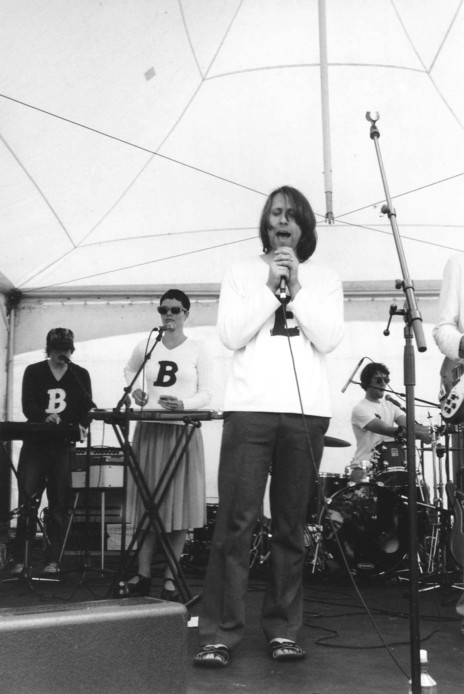
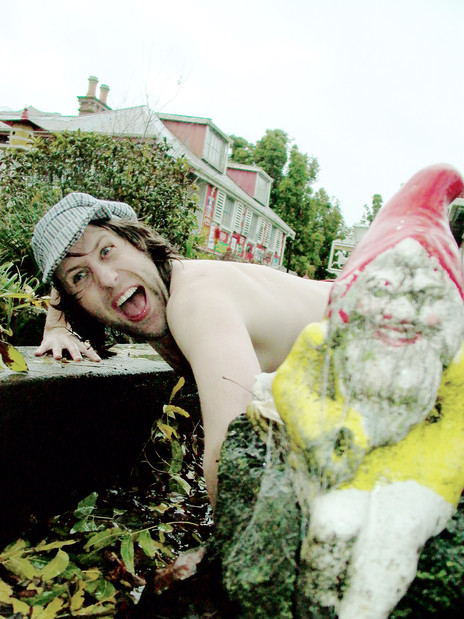
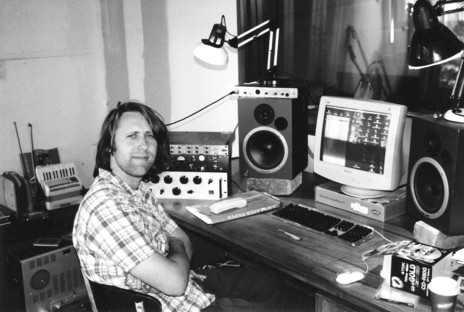
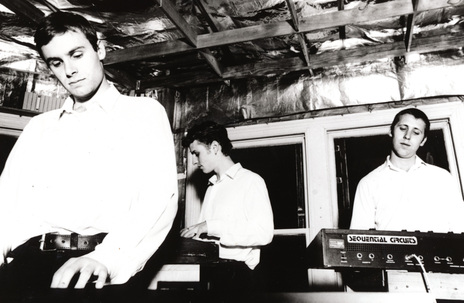
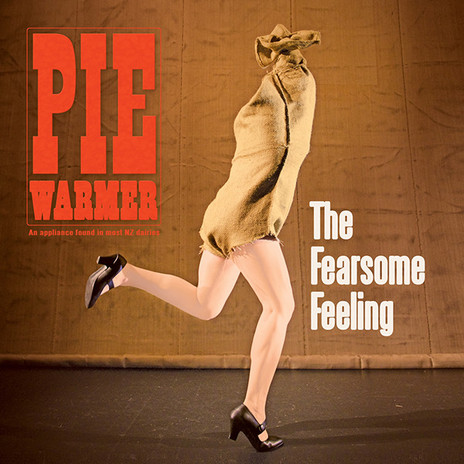
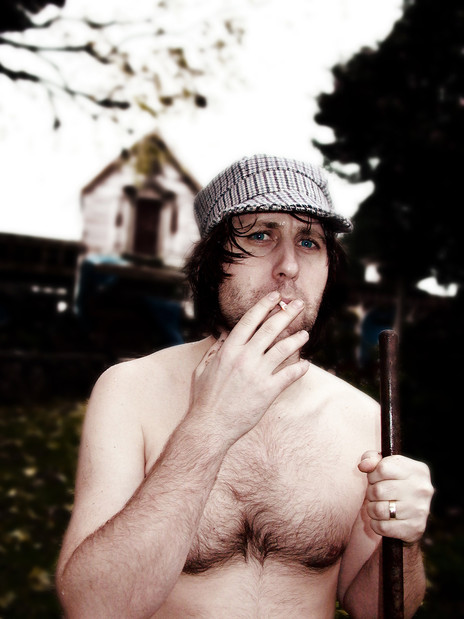
Ed met Anna Coddington when her first band, Hamilton's Handsome Geoffrey, won the Smokefreerockquest in 1998. Their “booby prize” (Ed’s term) was a trip to Auckland to record with him at the old TVNZ studios in Shortland St. Years later they wrote some songs together, and Ed produced and engineered her Duchess EP (Tea Set Records, 2005).
Downtown Puff was Ed’s name for his favourite pillowslip, a sweet little blue n’ white plaid plushy number.
Visit our sister site
NZ On ScreenMade with funding from
NZ On Air